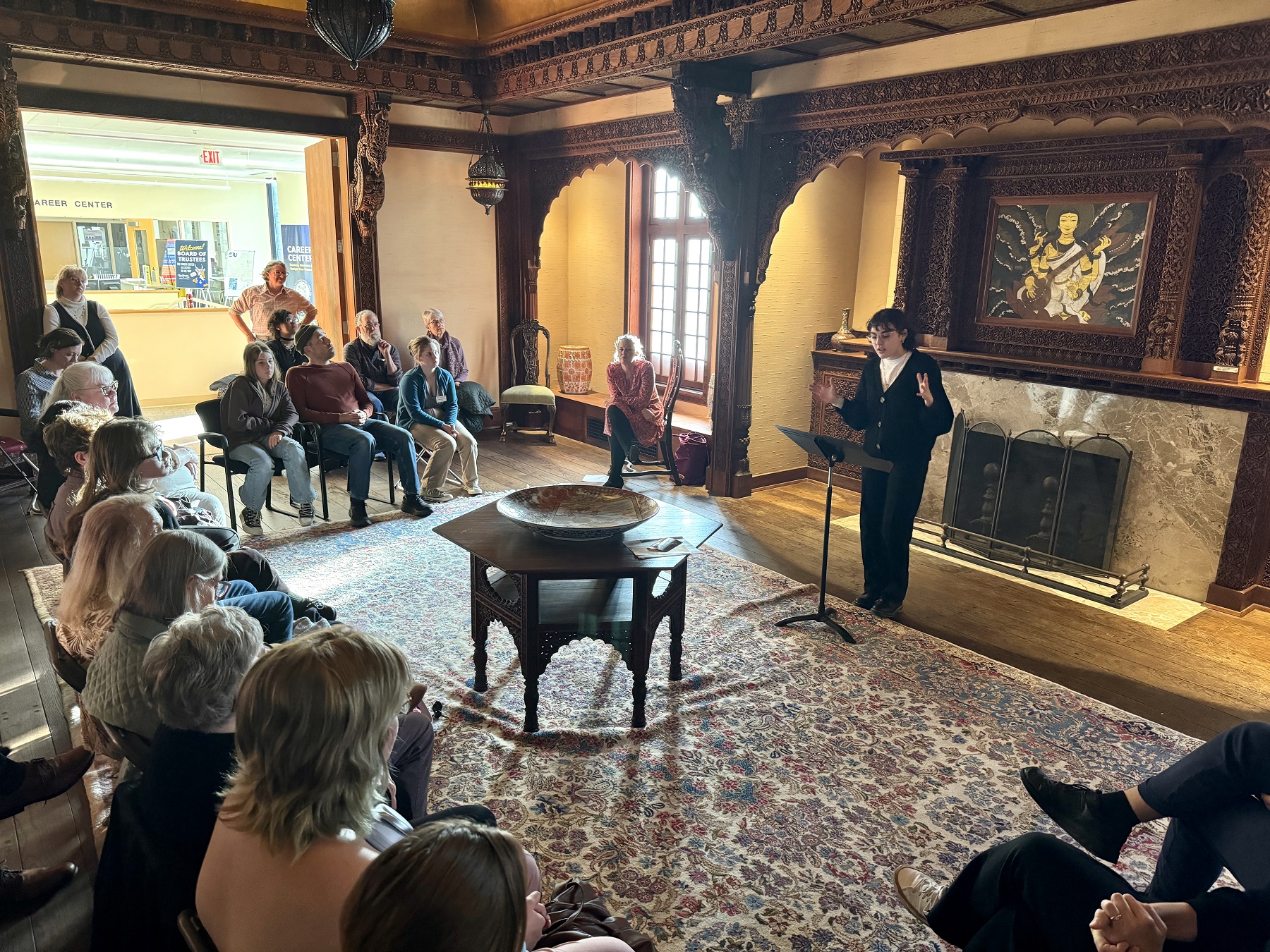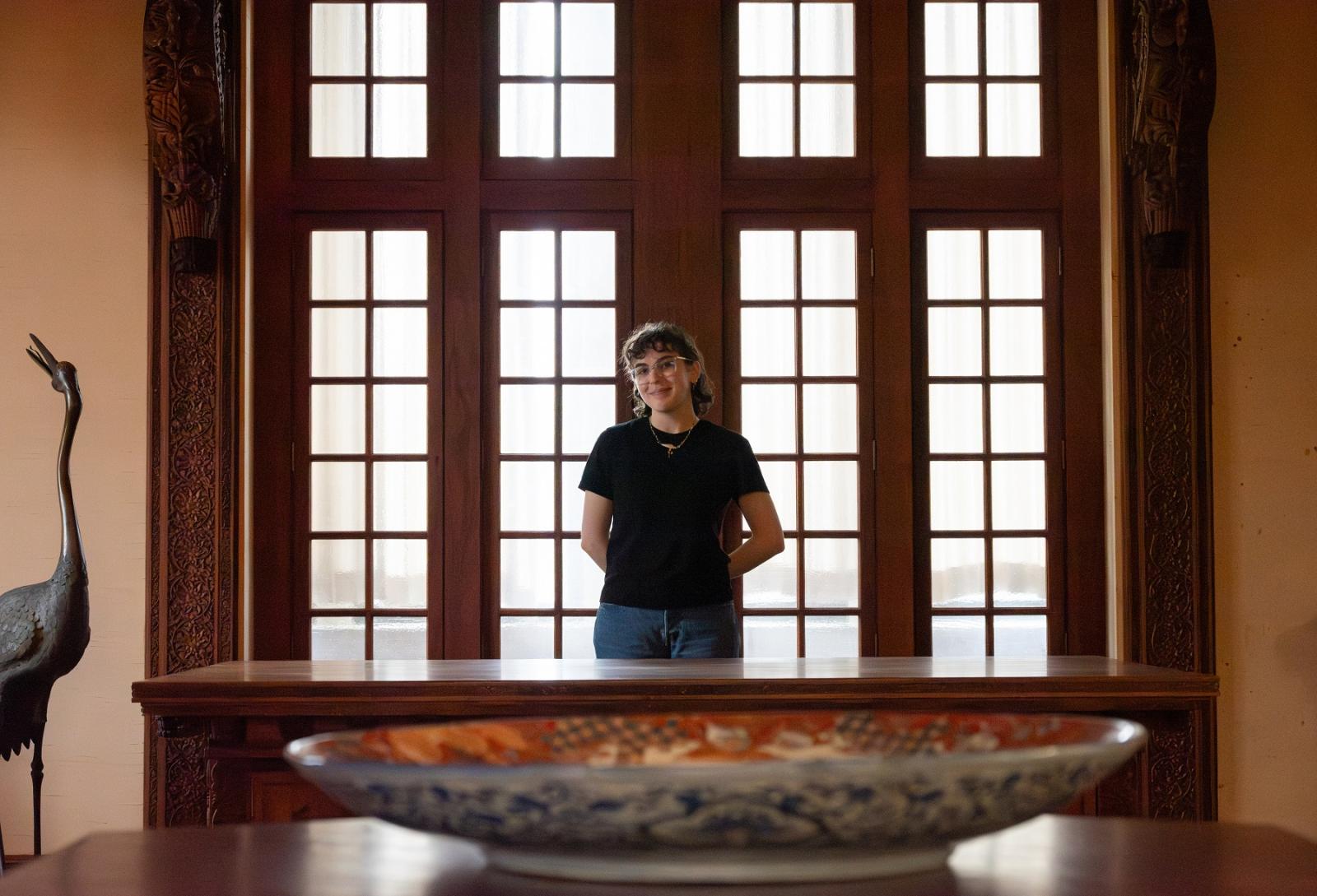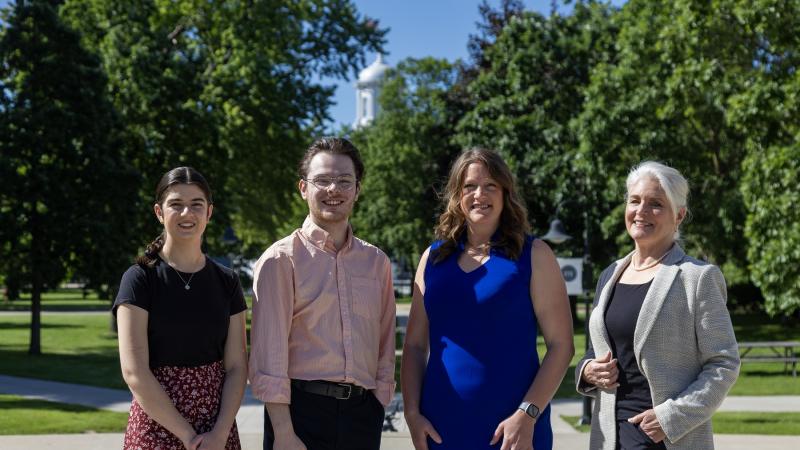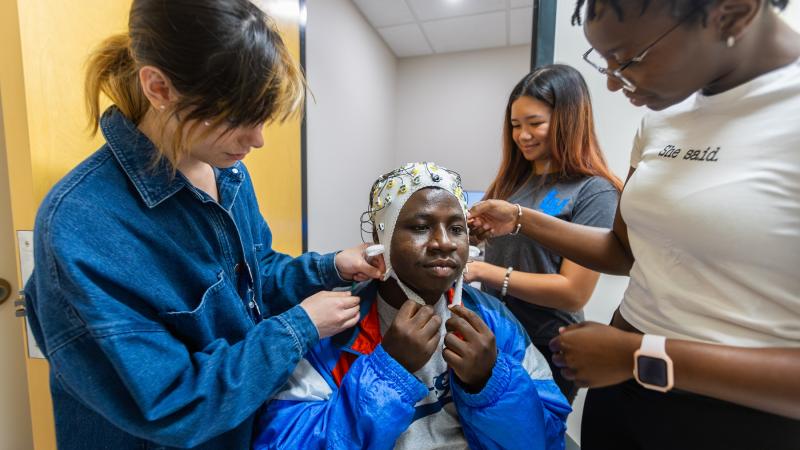Lawrence University senior Emma Jacobs has been researching the Teakwood Room in Chapman Hall for more than two years, part of her majors in history and art history. A presentation delivered recently in the historic space on Chapman's second floor was a culmination of her work to date.
Jacobs became interested in studying Orientalism within late 19th-century art and design during a class on 19th-century art in her sophomore year. She carried that research through her junior year with a paper that earned her the Elizabeth Richardson Award for women excelling in studio art and art history.
The Teakwood Room was designed by Lockwood de Forest and displayed at the 1893 World’s Columbian Exposition in Chicago, where Alice Chapman purchased it for her Milwaukee home. It was gifted to Milwaukee-Downer College following her death. When Lawrence and Downer merged in 1964, it was requested that the Teakwood Room be preserved; it was relocated to Lawrence, eventually being installed in Chapman Hall.

Emma Jacobs gives a presentation on her research in the Teakwood Room. (Photo by Deanna Kolell)
Jacobs’ research was funded by the Lawrence University Research Fellows program, which gave her the opportunity to travel to New York and Philadelphia to see other examples of de Forest’s work. Jacobs is interested in how history presents through objects in the Teakwood Room. de Forest was a member of the American Craft Revival movement of the late 19th and early 20th centuries. He designed stencils with motifs he observed in Indian architecture, and craftsmen in Ahmedabad, India, created his stencils and carvings.
Students have opportunities to conduct graduate-level research as undergrads and work alongside faculty on funded research projects.
“He was part of the movement of artists that was trying to move away from mass production and industrialization, preserving the arts and crafts, but he was still partaking in mass production,” Jacobs said.
As Jacobs works with Lawrence faculty and staff to help to preserve the Teakwood Room, she recognizes that this research interacts with a long history regarding both Lawrence and the former Milwaukee-Downer College.
“People hold this room very near and dear to their hearts,” she said. “They petitioned to have it come to Lawrence because they wanted it to stay so bad. With this research, there’s more incentive for funding to help preserve this room as a historical space.”
Beth Zinsli ’02, assistant professor of art history, curator of the Wriston Art Center Galleries, and director of the Museum Studies Interdisciplinary Area Program, has received two grants from the National Endowment for the Humanities for work on the Teakwood Room. The first grant, awarded in 2021, was used to assess the Teakwood Room to determine the best methods of preservation and care. The latest grant will be used to implement those recommendations, including the installation of UV light filters on the windows and secure display equipment.
Art history explores visual traditions that span history and circle the globe.
Jacobs will continue to be involved by creating permanent signage to explain the Teakwood Room’s importance and historical significance, based on her research.
“Emma’s rigorous research on the Teakwood Room reframes it within a global context and confirms that it is truly a university treasure that helps us better understand and share our history,” Zinsli said.
After graduation, Jacobs plans to attend graduate school to pursue a degree in library science with an intent to focus on archives management, using this research to showcase her skills in independent research and spoken presentation.
Immerse yourself in different times and places to develop important perspectives on the world past and present.

Any views, findings, conclusions, or recommendations expressed in this article do not necessarily represent those of the National Endowment for the Humanities.



